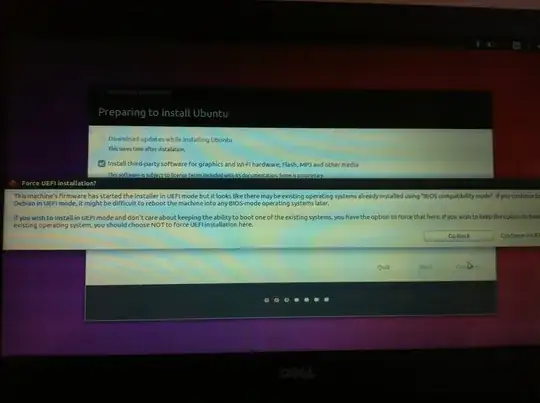I'm trying to create a dual boot with Ubuntu 16.04 and Windows 10 on my Inspiron-15-3000 series following this tutoriel in French made by Playmatic24
I didn't achied it when notifying many differences :
- I don' have a partition
sdbalong ansda - I think I disactivated the UEFI when uploading Ubuntu 14.4 for the fist time one year ago and some messaged pop-uped to warn me about something about it. May I follow up installation if I clicked on "not to force the uefi mode installation" ?
Here is a screenshot of the option where I stopped before choosing the "other option" installing option.
 - I had a weird "ubuntu" option for booting in the grey and blue screen. Maybe it is normal because of my first Ubuntu 14.4 or 16.4 installations ...
- I had a weird "ubuntu" option for booting in the grey and blue screen. Maybe it is normal because of my first Ubuntu 14.4 or 16.4 installations ...
My question is : may I have continued by partitioning with the three mounting option (for /, /home and the lastion I don't remember the name...) or do I miss something?
I tried then this tutorial in English from everydaylinuxuser.com, changing my fast boot option and secure boot option to down and now I'm not able to boot on Windows anymore, even from the blue and grey screen.
Update 2/5/2017
Here is the boot info :